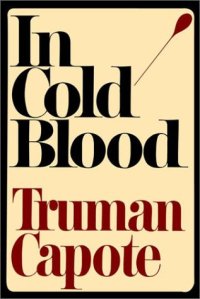Spelunking, or caving, is a popular but dangerous sport. I’ve been in caves before and they’re fairly spooky places. As a kid I went on several trips where we were taken deep into one cave or another. Each was dark, cold, musty, and left you with a feeling that the real world was far away. I grew up in Huntsville Alabama, a city spread over hundreds of caves. In 1805 the city was founded by John Hunt after he camped near where water rose from one of these caves to create the Big Spring. Big Spring Park, where I played many Little League baseball games, remains a focal point in Huntsville.
North Alabama, with its ubiquitous limestone, is the ideal area for cave formation. As the water seeps into and eats away the limestone, caves of varied sizes and shapes are produced, including the famous Cathedral Caverns near Woodville. So caving is a popular sport in the area. So much so that there is a volunteer organization known as the Huntsville Cave Rescue Unit.
This week a tragic caving accident occurred near Salt Lake City Utah. Twenty-six year old John Jones, an experienced spelunker, became wedged head-down in a very tight space and could not be rescued. After 28 hours he died. Because of the danger and difficulty in recovering his body, efforts to remove it have been abandoned and the cave known as Nutty Putty will be closed so that John Jones’ final resting place cannot be disturbed.
How did this tragedy happen? What caused Mr. Jones’ death?
It seems that he, along with 11 friends, all experienced cavers, entered the cave last Tuesday. Jones, who is 6 feet tall and weighs 190 pounds, a medical student at the University of Virginia, a husband, and the father of an eight-month-old, was attempting to slip through an area known as Bob’s Push, a narrowing that measured only 18 inches wide and 10 inches high. He apparently became wedged in a head-down position and could not free himself.
As many as 50 rescue workers began their efforts to free him at approximately 9 p.m. and over the next 28 hours worked frantically. At one point they managed to pull him back some 12 feet, accomplishing this with the use of a pulley system that was anchored to the ceiling of the cave. They managed to get him some food and water but then the pulley system failed and he slid back into the crevice. apparently wedging him in even tighter than before. His condition rapidly deteriorated and he died after some 28 hours.
What actually caused the death of John Jones may never be known, but there are several possible mechanisms that could have come into play.
Hypothermia: This is a significant and dangerous drop in the core body temperature and is a well known cause of death in people with prolonged exposure to cold environments. Since this is November and the cave is located near Salt Lake City, the temperature and conditions inside the cave could easily have caused hypothermia in John Jones. He was apparently some 700 feet from the cave’s entrance and approximately 150 feet below ground at the time he became trapped. It is likely the cave was cold and damp so that as time went by his body lost heat. With no way to protect him from this environment he could easily have slipped into hypothermia and died from this alone.
Asphyxiation: Another possibility is that his death was due to asphyxia. The mechanism for this would be similar to how a boa constrictor works. When a boa wraps around its prey, it contracts its muscles and traps the prey in its coils. Each time the prey exhales and its chest becomes smaller, the boa clamps down a little tighter. Breath by breath it compresses the chest to the point that the prey can no longer inhale because it can no longer expand its chest. Death is then due to asphyxia.
This easily could’ve happened to the victim of this accident. Each time he exhaled, his chest becoming smaller, he might have slipped a little deeper into this trap. With each breath the space became more constricting until he could no longer expand his chest and asphyxia resulted.
Aspiration: It’s possible that aspiration of stomach contents could also have occurred. Since he was in a head down position anything that exited his stomach could easily be inhaled into his lungs and this could also lead to death from asphyxia. This might be particularly true since at one point during the rescue he was free enough to be given food and water. Then when he slipped back into the crevice, he could have vomited and aspirated his stomach contents.
Doesn’t it seem like the worst and most unexpected tragedies occur around holidays and this one is no different. It seems that John Jones not only left behind a wife, a young child, and a grieving family, but apparently also an unborn child. And all the day before Thanksgiving. Some things just don’t make sense.


































